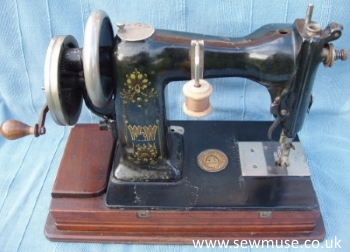| Wheeler & Wilson History |
| Wheeler & Wilson No.1 |
| Wheeler & Wilson No.8 |
| Wheeler & Wilson No.9 and D-9 |
| Wheeler & Wilson Accessories |
| American Made Machines |
|
Return to The Gallery |
| Home |
WHEELER & WILSON
No.9 and D-9
Wheeler & Wilson's No. 9 machine was introduced in 1887 it was designed for Family use with its high arm it was advertised as 'The Only Perfect Sewing Machine for Family Use'.
No. 9 machines use the same bobbin mechanism as the No. 8 and very early examples have the stitch length adjuster on the pillar which was subsequently relocated to the bed and the design of the No. 9 then remained largely unchanged until the introduction of the D-9.
In 1895 the D-9 was introduced which adapted the mechanism of the No. 11 manufacturing machine. Externally the most obvious difference was the hand appliance which was more compact. In Great Britain the D-9 was primarily sold as a hand machine although it could be used with a treadle. Following the initial launch of the machine the company seems to have dropped the "D" and simply advertised it as the No. 9.
After Singer's take over of the Wheeler & Wilson Manufacturing Company in January 1907 the D-9 was produced under the Singer brand name as the 9W until at least 1913.
Follow this link to a FREE copy of the Wheeler & Wilson No. 9 (D-9) Manual
No. 9 machine Serial No. 60100.
Made at Bridgeport, Connecticut around 1889, this machine has a gantry mounted handcrank which also incorporates the bobbin winder.
The right hand slide plate is stamped with the serial number and three patent dates the last being July 17 1888. The No.9 uses the same bobbin mechanism as the No.8 and has a crystal presser foot.
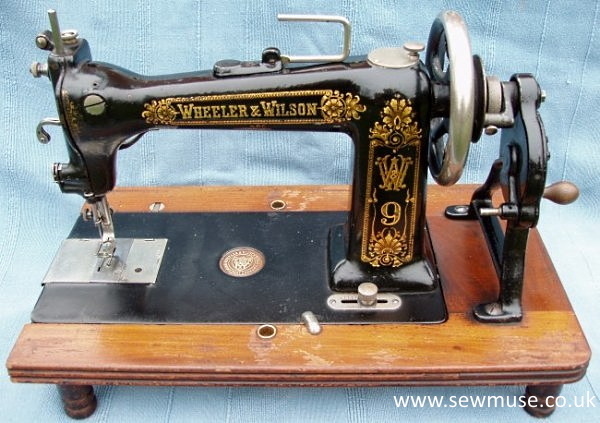

The base is not enclosed instead the machine and handcrank are mounted on a plinth which stands on four turned feet. The machine is retained in place with peg & socket hinges and a thumb catch.
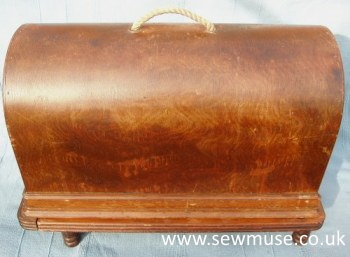
It has a bentwood case with rope handle. The case has two prongs which locate in the brass sockets either side of the base. The prongs are threaded and would have had a butterfly screw to hold the case firmly in position.
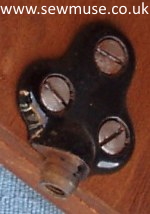
The unusual design of the base means that the left hand end of the plinth is actually attached to the case!
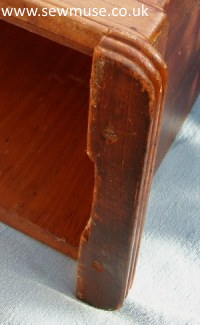
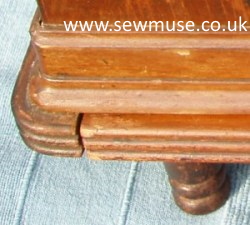
D-9 machine Serial No. 2292781.
Made at Bridgeport, Connecticut around 1897, this machine has a bentwood case with metal handle.
The left hand slide plate which covers the bobbin area is missing. The right hand plate is stamped with the serial number and D-9 and there are seven patent dates the last being Aug 2nd 1892. The D-9 adapted the mechanism of the No. 11 manufacturing machine which is significantly different to the No.9 machine.
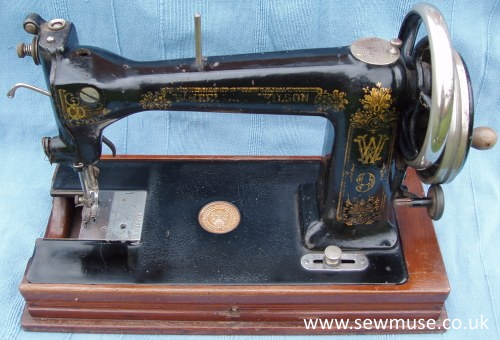
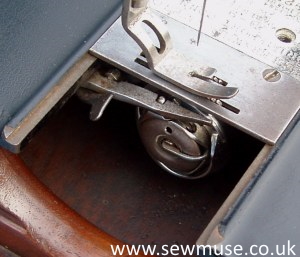
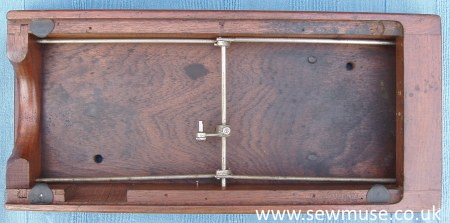
This machine has a bentwood case with metal handle. The four point locking mechanism was patented in 1879 and was used on the No.8, No.9 and D-9 machines.
The machine is held in place by two long screws which pass from the bottom of the base into the underneath of the machine casting.
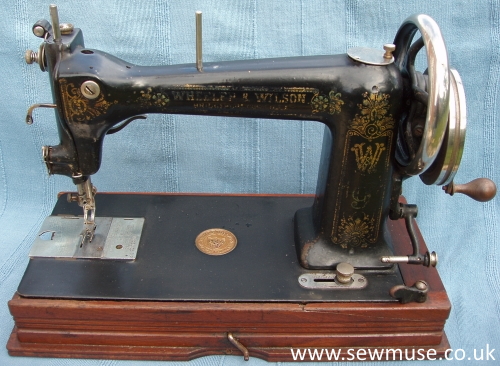
D-9 machine Serial No. 2347491
This example was probably made in the same year but has a slightly different locking mechanism than the above machine which operates using a lever. The head is recessed into the base and held in place by the thumb catch.
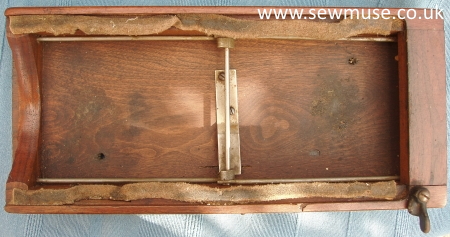
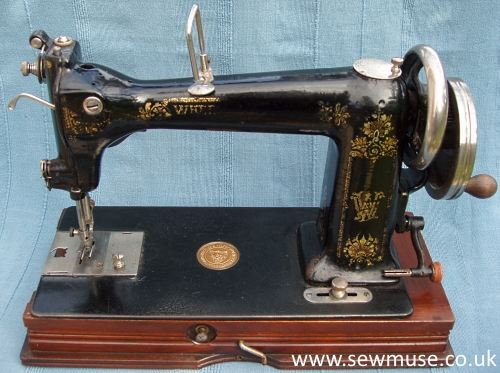
D-9 machine Serial No. 2398019.
Although this D-9 made around 1898 looks almost identical to the earlier machines it has a number of differences, most notably the bed is slightly shorter and concequently the slide plate over the bobbin is shorter, the balance wheel has been reduced in diameter and the machine is now attached to the base with hinges with a locking pull in the front of the base.
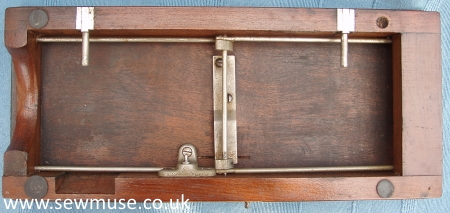
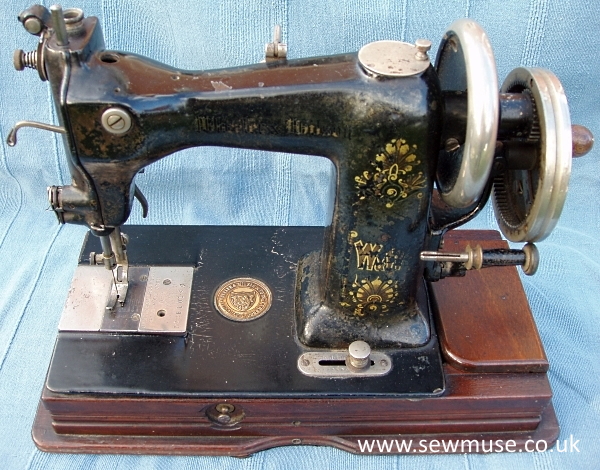
D-9 Model 9-H-4 Serial No. 2810160.
A short arm D-9 with accessory compartment made in 1904. The machine has 3 patents on the right hand plate.
Having produced the D-9 from 1895 why the company decided to introduce this model with short arm and bed is not known, but it may have been to make the D-9 more portable. However it was produced for less than a year and in limited numbers.
Three versions were available each with different bases, this one with an accessory compartment, another with an accessory compartment but incorporating recesses for a treadle belt (Model 9-H & F-6) and one without an accessory compartment (Model 9-H-6)
